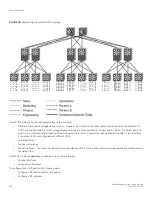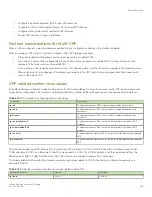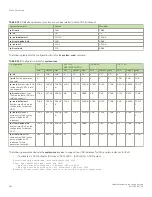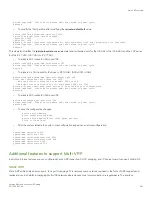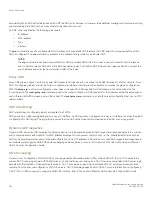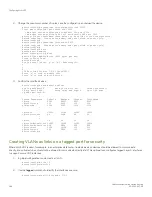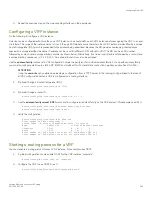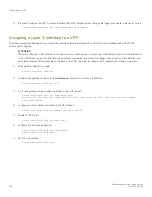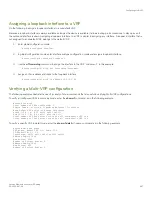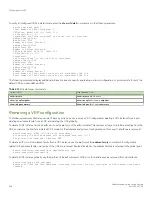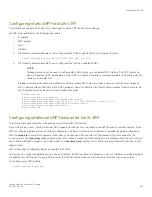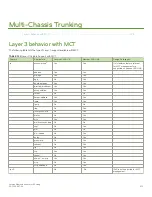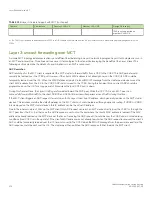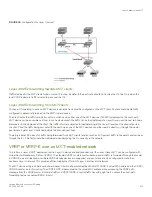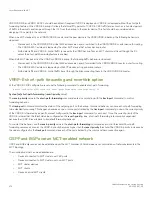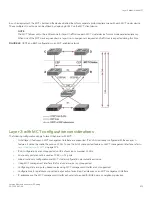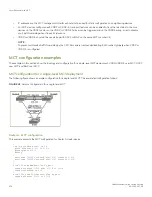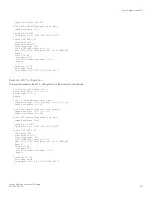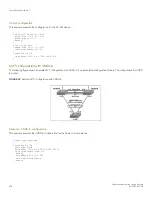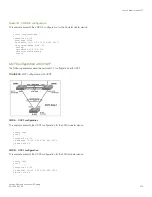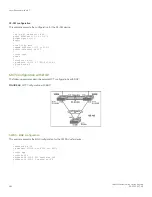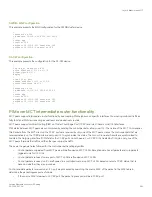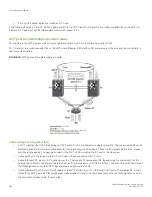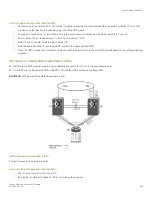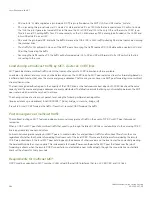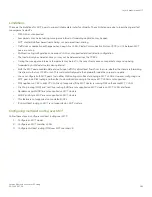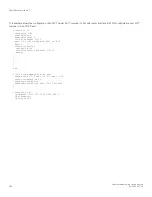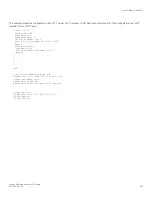
TABLE 114
Layer 3 Feature Support with MCT (continued)
Feature
Sub-feature
Session VLAN VE
Member VLAN VE
Design Philosophy
IPv6 is not supported on
member VLAN VE.
a.) *ICL: The ICL port is added as default whenever a CCEP is in OIF. The data traffic received from the ICL port is filtered out by a dynamically programmed egress filter on the
CCEPs.
Layer 3 unicast forwarding over MCT
A simple MCT topology addresses resiliency and efficient load balancing in Layer 2 network topologies. Layer 3 technologies can run in
an MCT environment too. This allows various Layer 3 technologies to function while leveraging the benefits at the Layer 2 level. The
following sections describe the details of Layer 3 behavior in an MCT environment.
ARP Resolution
ARP resolution for the MCT client is required at the MCT cluster to forward traffic from a CEP to the CCEP. This ARP packet would
normally be learned over the CCEP port. However, if the client’s MAC address is not already known on the CCEP, its ARP could be
temporarily learned over the ICL. When the MAC Database Update Protocol (MDUP) message from the cluster peer device moves the
client MAC address from the ICL to the CCEP, ARP is also moved to the CCEP. During this transient time, no client ARP should be
programmed over the ICL for a long period of time unless the local CCEP port is down.
During this transient time, the Layer 3 traffic gets forwarded toward the MCT peer. While the ICX 7750, as an MCT peer, can
successfully forward this traffic to the client, SX 800 and SX 1600 devices will experience loss of traffic during this time.
If the MCT client triggers an ARP request, it would do so for its Layer 3 next hop IP address, which generally resides on the MCT cluster
devices. This address could be the default gateway on the MCT client or it could be learned through dynamic routing. If VRRP or VRRP-
E is deployed on the MCT cluster devices, this IP address can be the virtual IP address.
Due to the inherent nature of LAG on the MCT client, this ARP request can reach an MCT device directly (over the CCEP) or through the
MCT peer (over the ICL). In either case, the ARP response is sent out on the port where the client’s MAC address is learned. If the MAC
address is already learned on the MCT device at the time of receiving the ARP request, it would be over the CCEP under normal working
conditions (local CCEP is in the up state). If the client’s MAC address was not already learnt when the ARP request is received, the client’s
ARP could be temporarily learned over the ICL (and is moved to the CCEP when the MDUP message from the peer is received) and the
ARP response could be sent over the ICL. The cluster peer then switches the ARP response further towards the MCT client.
Layer 3 behavior with MCT
FastIron Ethernet Switch Layer 3 Routing
572
53-1003627-04
Summary of Contents for FastIron SX 1600
Page 2: ...FastIron Ethernet Switch Layer 3 Routing 2 53 1003627 04 ...
Page 16: ...FastIron Ethernet Switch Layer 3 Routing 16 53 1003627 04 ...
Page 20: ...FastIron Ethernet Switch Layer 3 Routing 20 53 1003627 04 ...
Page 142: ...FastIron Ethernet Switch Layer 3 Routing 142 53 1003627 04 ...
Page 150: ...FastIron Ethernet Switch Layer 3 Routing 150 53 1003627 04 ...
Page 200: ...FastIron Ethernet Switch Layer 3 Routing 200 53 1003627 04 ...
Page 214: ...FastIron Ethernet Switch Layer 3 Routing 214 53 1003627 04 ...
Page 350: ...FastIron Ethernet Switch Layer 3 Routing 350 53 1003627 04 ...
Page 476: ...FastIron Ethernet Switch Layer 3 Routing 476 53 1003627 04 ...
Page 588: ...FastIron Ethernet Switch Layer 3 Routing 588 53 1003627 04 ...

